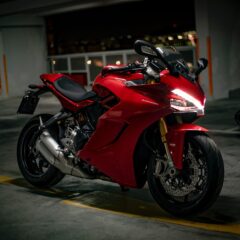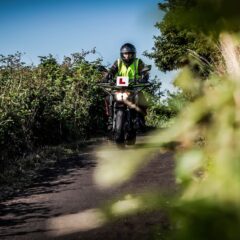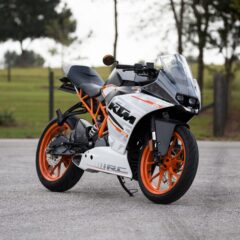
7 Top Motorcycle Accessories
With Christmas just around the corner, you might be wondering what to get your favourite motorcycle enthusiast or even a little something for yoursel...
 Phoenix Motorcycle Training LTD
Phoenix Motorcycle Training LTD
 Phoenix Motorcycle Training LTD
Phoenix Motorcycle Training LTD

Getting your licence to ride begins with a compulsory basic training certificate for most motorcyclists. It’s part of the first motorcycle licence for 16-year-olds. It does come with some restrictions. But those restrictions are to help you become a safe rider and steadily improve your skill.
Your CBT certificate allows you to ride on most UK roads legally. It’s valid for two years and allows 16-year-olds to ride a motorcycle or moped up to 50cc. You won’t be able to use motorways with a CBT certificate. Nor will you be allowed to carry passengers. It’s important you understand how motorcycle Compulsory Basic Training works, so read on to learn all you need to know about gaining the freedom of the road when you’re 16.
The earliest you can learn to ride a motorcycle on UK roads is 16. But before you book your compulsory basic training, there are a few other steps you need to take. The first of these is applying for your provisional licence.
There is no test you need to take to get your provisional licence. You’ll only need to provide proof of your age and your address for the past three years. Paying for your provisional licence online costs £34. It’s a little cheaper than applying with post office forms.
It’s also a good idea to get a copy of the Highway Code. It details the road rules and is the same book you need for a driving licence. Reading this is a good way to prepare for getting your compulsory basic training certificate. If you have any questions while reading the highway code, note them down so you can ask your motorcycle training instructor.
Once you have your provisional licence and a copy of the Highway Code, you’re ready to book a CBT course.
Finding a motorcycle training course that’s right for you takes a little time and research. Not all motorcycle training schools are the same. And not all CBT courses will include everything you need to learn to ride at the advertised cost. So ask around with friends and family, find out what they liked about their training and what they didn’t.
It’s also a good idea to check online reviews for motorcycle training schools and instructors. Checking what other students thought about their training can help you decide if a particular school or course is right for you.
Make a short list of the CBT courses near you and give the schools a call. Ask about the course cost and what it covers. Ideally, you want a compulsory basic training course that includes the motorcycle or moped you’ll learn to ride on, insurance, petrol and all the safety gear you need. You also want an experienced, supportive and knowledgeable instructor.
Only DVSA-accredited and qualified motorcycle instructors can train you for your CBT certificate. They’re the only ones who can sign your certificate too. And they’re only allowed to sign it and give it to you once you have reached a safe level of competence and confidence on a motorcycle or moped.
All of the Phoenix Motorcycle Training schools offer compulsory basic training. All of our instructors are accreditated and fully qualified to provide CBT training. Many of them have additional qualifications so they can take advanced motorcycle training courses too. And we keep our groups small so everyone gets the time and attention they need while they’re learning.
The compulsory basic training certificate is officially known as a DL196. This certificate on its own isn’t enough to legally ride on UK roads. You’ll need a licence to go with it. That’s why the first step to motorcycle licences for 16-year-olds is getting your provisional licence.
Your compulsory basic training day will start in the classroom. The motorcycle training instructor will check your paperwork and make sure you can read a licence plate from 20.5 metres away. If you usually wear glasses or contacts, that’s fine. Just make sure you have them on or with you for your training and when you ride!
After going through the necessary formalities, the training will begin. You’ll get an outline of what the day covers and you’ll jump into the theory around learning to ride. This is so you have some idea of how the motorcycle or moped will behave when you get to riding.
Next, you’ll head outside to get familiar with your machine! It may be a 50cc motorcycle but it’s more likely to be a 50cc moped you’ll learn to ride on. That’s because when you’re 16, you’re restricted to a low-powered bike. When you reach your 17th birthday, you can level up to a 125cc motorcycle if you want to.
Your instructor will take you through all of the controls, how to turn it on and off, wheel it safely and carry out basic safety checks so you know it’s good to ride. After that, it’s time to try riding!
You’ll cover things like balance, steering, braking, and safety routines. Once you have these down, it’s time to get a little more familiar with the road rules and the theory of safe riding. This part of your CBT training can only be taken with one other student. Or you may get the instructor all to yourself.
Now it’s time for the part you’ve been waiting for — riding on the road! This is the final part of your training. Your instructor will be with you the whole time, riding alongside you or slightly behind. They’ll be in radio contact the whole time too.
Over the next two or so hours, you’ll ride on a variety of roads, but not any sections of the motorway. You’re not allowed to travel on motorways with a CBT certificate. 50cc motorbikes and mopeds aren’t really fast enough to safely travel on the motorway.
Your instructor will get you to pull over every now and then while you’re riding on the road. This is so they can give you feedback and talk to you about your rider technique. Listen and stay calm while you’re learning — it will help you improve faster.
If you have any questions or need clarification, just ask. There are no stupid questions. You’re instructor really does want to help you become a safe and competent rider. They also want you to enjoy the whole experience! At the end of the road-riding session, you’ll find out if you’ve reached the level needed to get your compulsory basic training certificate. It’s likely you’ll have a good idea if you’ve nailed it or not because your instructor will be coaching you along. They’ll be letting you know how you’re doing.
Once you have your CBT, you’ll need to get out and ride regularly. The compulsory basic training certificate gives you the freedom of the road so you can keep learning. That happens through practice, in all sorts of weather and traffic conditions. Follow our tips for learning to ride and honing your skills. Don’t push yourself beyond your limits. Trust that you will improve with your experience over the next few years. After that, it’s time to train for a full motorcycle licence.

With Christmas just around the corner, you might be wondering what to get your favourite motorcycle enthusiast or even a little something for yoursel...

If you love motorcycle riding, you’ve probably daydreamed about riding a motorbike for a living. A professional racer or stunt rider is OK for some...

Getting a UK motorcycle licence can seem a complicated process. Particularly when compared to a driving licence for a car. Whether you choose the pro...
This website uses cookies to personalise content, ads, and analyse traffic, sharing data with partners who may combine it with other information. See our Privacy Policy for more information.